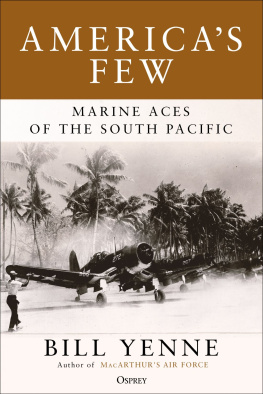Into the Tigers Jaw

PUBLISHED WITH THE MARINE CORPS ASSOCIATION
Into the Tigers Jaw
Americas First Black Marine Aviator
The Autobiography of Lt. Gen. Frank E. Petersen
with J. Alfred Phelps
Naval Institute Press
Annapolis, Maryland
Naval Institute Press
291 Wood Road
Annapolis, MD 21402
1998 by Frank E. Petersen and Joseph A. Phelps
All rights reserved. No part of this book may be reproduced or utilized in any form or by any means, electronic or mechanical, including photocopying and recording, or by any information storage and retrieval system, without permission in writing from the publisher.
Published in paperback in 2007 by Presidio Press.
First Naval Institute Press paperback edition published in 2012.
ISBN: 978-1-61251-191-7
Note for Librarians: A cataloguing record for this book is available from Library and Archives Canada at www.collectionscanada.ca/amicus/index-e.html.
 This paper meets the requirements of ANSI/NISO z39.48-1992
This paper meets the requirements of ANSI/NISO z39.48-1992
(Permanence of Paper).
20 19 18 17 16 15 14 13 12 9 8 7 6 5 4 3 2 1
First printing
Contents
During World War II, blacks learned, again, that fighting for their country brought them no closer to full citizenship. Trying to enlist, they were often summarily rejected. The Army accepted them only in a quota system linked to the proportion of the black population of the country, and then only in segregated units whose roles were primarily noncombatant in nature, except for certain special Army Air Forces units like the Tuskegee Airmen, set up only in response to civil rights campaigns. These were regarded as an experiment, and were not expected to last.
Contrary to expectations, these units distinguished themselves in combat. Many of the men involved died. Generally, however, historical patterns show that blacks were usually allowed to serve only in times of crisis, when manpower needs surmounted the restrictions of racism.
In 1948, President Harry Truman issued an edict to the armed forces, requiring its integration. Blacks would be given equal opportunity. They were to enjoy the same advantages and opportunities to perform as their white counterparts. Blacks then on active duty viewed the pronouncement with elated optimism, but others moaned in sardonic cynicism, recalling that actions, not words, were the measure of progress.
When President Truman issued his edict, the Marine Corps, of all the services, was in the least enviable position for compliance. Not until May 1942 had it finally succumbed to political and public pressure and officially accept blacks into its ranks for the first time in its 150-year history. It was the last of the services to do so.
The first black Marines underwent segregated training at the Montford Point Marine Base, part of the massive Camp Lejeune Training Base. Initially assigned for duty to a composite defense battalion (a small, self-sufficient army that employed a maximum number of special skills ranging from infantryman to radar technician), the first recruit, Pvt. Howard Perry of Charlotte, North Carolina, arrived for duty on 26 August 1942. By the middle of September, 125 new black recruits were undergoing training under the leadership of white enlisted and officer personnel. Commanding was Col. Samuel A. Woods, who later wrote to the director of Marine Corps recruiting:
Thank you for getting us some excellent recruits. They are most enthusiastic and I am sure they are doing their level best to make good. We have to train the organization to operate, maintain, and repair the equipment that belongs to the Composite Battalion; therefore we have to run our own schools. The men recruited have in general shown splendid aptitude for the service; at present we have probable rejections, but so far none of these has been for inaptitude.
After the blacks passed their trial period, plans were immediately made to bring more blacks into the Corps and to form more black units. By 1949, blacks in the United States Marine Corps numbered 1,633 enlisted and no officers on deck. By 1951 there were three black officers in the Corps, and by the end of 1967 officers numbered 314 with 23,046 black enlisted. (It is noteworthy that the number of black officers grew extremely slowly. Fred Branch, the first black to become a commissioned officer in the Marine Corps, was summarily discharged into the reserves the same day he was commissioned in 1945. As will be seen, the scaling down of the Corps after World War II dictated that the 245 men in his officers candidate class were simply not needed.)
However, during World War II, a total of 19,168 blacks served in the Marine Corps. Of this number, approximately 13,000 served in overseas combat commands. The 52d Defense Battalion was organized on 15 December 1943. It saw service on Roi and Namur Islands, Kwajalein, the Marshalls, and Guam before returning to the States in 1946. There were a total of twenty such defense battalions in the Corps. The two black battalions (the 51st and 52d) were the last formed.
As the United States began to achieve dominance in the Pacific, the Marine Corps need for logistics personnel supplanted the need for combat troops. Blacks were trained in logistics handling skills and formed into twelve ammunition-handling companies as part of the beach parties used in amphibious landings. Beginning with the Marine landing on Saipan, these ammunition companies took part in every major landing thereafter. The first black Marine to die in combat was Pfc. LeRoy Seals of Brooklyn, New York. He received fatal wounds shortly after the Saipan landing on 16 June 1944.
A future Marine commandant, Gen. Lemuel C. Shepherd, then commanding the 41st Provisional Marine Brigade, took the opportunity to praise the 4th Ammunition Company:
You are commended for the splendid and expeditious manner in which the supplies and equipment were unloaded from the LSTs group. Working long hours frequently during nights and in at least two instances under enemy fire [you] so coordinated your unloading [that supplies kept] flowing to the beach. You have contributed in large measure to the successful and rapid movement of combat amphibious operation.
General Shepherd was not alone in praise of the black Marines. General A. A. Vandegrift, then commandant of the Marines, noted: The Negro Marines are no longer on trial. They are Marinesperiod. Major General William Rupertus, then commanding the 1st Marine Division, commended the 7th Ammunition Company for its action on Peleliu:
The performance of the officers and men of your command throughout the landing on Peleliu and the assault phase has been such as to warrant the highest praise. Unit commanders have repeatedly brought to my attention the wholehearted cooperation of each individual. The Negro race can well be proud of the work performed by the Seventh Ammunition Company as they appreciate the privilege of wearing a Marine uniform and serving with the Marines in combat. Please convey to your command these sentiments and inform them that in the eyes of the entire 1st Marine Division, they have earned a well done.
In spite of these commendations based upon their performance in combat environments, blacks were still not allowed to serve in infantry divisions or Marine air units. There were no black women Marines or officers. As World War II drew to a close, the Marine Corps redefined its manpower requirements and restricted the number of blacks to a total of 2,880, divided among garrisons, service support, antiaircraft, and the stewards branch. By the end of December 1946, this number had dropped to 2,238. In the spring of 1947, blacks were given a final choice: Either transfer to the stewards branch or be discharged from the Corps. Some selected the latter course of action, but by September 1948, only 1,532 blacks remained in the Corps.
Next page









 This paper meets the requirements of ANSI/NISO z39.48-1992
This paper meets the requirements of ANSI/NISO z39.48-1992